 Fall 2005 ASTR 1120-001 Homepage
Fall 2005 ASTR 1120-001 Homepage
 Fall 2005 ASTR 1120-001 General Astronomy: Stars & Galaxies: Clicker Questions
Fall 2005 ASTR 1120-001 General Astronomy: Stars & Galaxies: Clicker Questions
T 2005 Aug 23 (not graded):
-
Which is nearest to us on Earth?
-
Which is farthest from us on Earth?
Th 2005 Aug 25 (not graded):
-
On the scale of the Model Solar System
that starts with the Sun just outside the Fiske Planetarium
and extends to Pluto near the Engineering building,
about how far away is the nearest star?
A. Folsom Stadium (1 km);
B. 3500 19th St, North Boulder (3 km);
C. Denver (30 km);
D. Aspen (300 km);
E. New York (3,000 km).
-
If you made a model of our Milky Way galaxy
that was about as big as the Model Solar System,
about how far away would be the nearest star on that scale?
A. Hair (0.1 mm);
B. Straw (1 mm);
C. Marble (1 cm);
D. Person (1 m);
E. Room (10 m).
-
Fill in the blank:
- Earth
- Solar System
- Milky Way
- ?
- The Universe
A. The Galaxy;
B. The Local Group;
C. The Virgo Cluster;
D. The Local Supercluster;
E. The Cosmic Microwave Background.
T 2005 Aug 30:
-
The absolute temperature of an object is a measure of:
A. How hot it feels;
B. How fast it is moving;
C. How much light it emits;
D. Its color;
E. The average energy per particle of random motions of its particles.
-
The sphere has diameter 10 times that of a marble.
About how many marbles will fit in the sphere?
A. 100;
B. 200;
C. 400;
D. 800;
E. 1000.
Th 2005 Sep 1:
-
If you looked at an extremely hot star (surface temperature of say 100,000 Kelvin)
what color would it appear to be?
(You are wearing neutral filter dark glasses so the light does not blind you).
A. Red;
B. Blue;
C. Violet;
D. White;
E. Black - the star emits its light in ultraviolet and x-rays, not in visible light.
-
A red stained glass is placed over a sodium yellow light.
Seen through a diffraction grating,
the bands of yellow in the spectrum will appear:
A. Red;
B. Orange;
C. Yellow;
D. Brown;
E. Black.
-
All the lights are turned off except for the
light from the sodium lamp.
What colors will everything appear to be?
A. All the usual colors, but tinged with yellow;
D. Red, yellow, and green will mostly retain their colors, but blue will appear black;
B. Shades of yellow to black;
C. Shades of white to black;
E. Black.
-
A lit sodium lamp is placed in the path of a spectrum of white light.
The spectrum will:
A. Show a bright band of emission in yellow;
B. Show a dark band of absorption in yellow;
C. All the colors of the spectrum, from red to violet, will turn yellow.
T 2005 Sep 6:
-
At its core, the Sun is fusing hydrogen to helium,
something that can only happen at high temperature,
about 107 Kelvin.
The source of energy that allowed the Sun to heat up enough to begin fusing nuclei was:
A. The Big Bang;
B. Electric currents generated by magnetic fields;
C. Chemical energy;
D. Nuclear fission;
E. Gravitational contraction.
-
The core of the Sun is undergoing the same process of nuclear fusion
that occurs when a hydrogen bomb explodes.
Why does the Sun not explode?
A. Because it is an ionized plasma of electrons and nuclei;
B. If its temperature increases, the core expands, causing its temperature to decrease;
C. Neutrinos carry energy away from the core, cooling it;
D. It is exploding, but gravity contains the explosion;
E. The core is constantly undergoing mini-explosions, which reveal themselves through seismic oscillations of the Sun surface.
-
A flotilla of spacecraft are initially in the same circular orbit around the Sun.
Each is allowed to fire a short rocket burst.
Who wins the race?
The one who fires:
A. Forward;
B. Outward;
C. Backward;
D. Inward;
E. Not at all.
Th 2005 Sep 8:
-
What profound new idea did Arthur Eddington have that revolutionized our concept of the Sun?
A. That the Sun is the center of the Solar System;
B. That mass and energy are equivalent;
C. That the interior of the Sun is an ionized plasma, which is compressible like a gas;
D. That the Sun is made of hydrogen;
E. That the Sun is a star.
-
How did Eddington estimate the temperature at the center of the Sun?
A. From the wavelength of the peak of the visible light spectrum of the Sun;
B. From the equivalence of energy and mass (E = m c2);
C. By estimating the temperature needed to ionize hydrogen;
D. By estimating the temperature needed to start fusing hydrogen;
E. By equating the particle velocity to gravitational escape velocity.
T 2005 Sep 13:
-
The primary source of the Sun's energy today is:
A. Chemical;
B. Nuclear fission;
C. Nuclear fusion;
D. Gravitational contraction;
E. A black hole at its center.
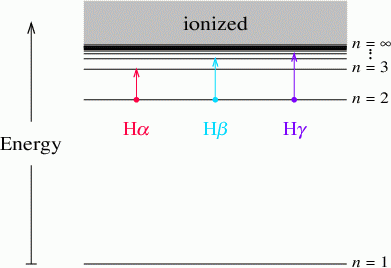
-
When should
Ha,
Hb,
Hg,
...
absorption in a star be strong?
A. When the n = 1 (ground) level is most populated;
B. When the n = 2 level is most populated;
C. When the n = 3, 4, 5, ... levels are most populated;
D. When H is mostly ionized.
-
When is the n = 2 level of H most populated?
A. Low temperature;
B. Intermediate temperature;
C. High temperature.
-
The figure illustrates how light emitted by a star spreads out with distance d from the star.
It follows from the figure that the apparent brightness of a star
varies with distance d as:
A. 1/d2 because the light spreads in proportion to area;
B. 1/d because the light spreads out in proportion to distance;
C. it does not vary with distance, because the total light is the same even if it spreads out;
D. d because the light spreads out in proportion to distance;
E. d2 because the light spreads out in proportion to area.
Th 2005 Sep 15:
-
Which of the following statements is true?
A. An atom absorbs light at the same wavelengths at which it emits light,
because the photon energy must equal the difference between two energy levels of the atom;
B. An atom can absorb light only at wavelengths other than those at which it emits,
because an atom cannot simultaneously absorb and emit light;
C. The wavelength at which an atom can absorb light
depends on the temperature of the atom,
with the photon energy being proportional to the temperature;
D. Atoms absorb and emit light over a broad continuous range of wavelengths,
because light is a wave, and its interactions with an atom are complex;
E. When an atom absorbs a photon of light,
the photon energy disappears, so total energy is not conserved.
-
Annie Jump Cannon rearranged the spectral types of stars into the sequence OBAFGKM.
Cecilia Payne-Gaposchkin subsequently showed that this sequence represented a sequence of:
A. Mass;
B. Radius;
C. Surface Temperature;
D. Age;
E. Composition.
-
Flying above the blurring effect of the atmosphere,
the Hipparcos satellite obtained parallaxes about 100 times more precise
than possible from the ground.
The Hipparcos satellite could thus measure distances
how many times further than from the ground?
A. 1;
B. 10;
C. 100;
D. 104;
E. 106.
T 2005 Sep 20:
-
What are the two main instrinsic observable properties that astronomers use to classify stars?
A. Distance and position on the sky;
B. Mass and Radius;
C. Central Temperature and Pressure;
D. Surface Temperature and Luminosity;
E. Age and composition.
-
Which of the following is false? The stars in a star cluster have almost the same:
A. Position on the sky;
B. Distance;
C. Age;
D. Initial composition;
E. Mass.
-
If you put the Pleiades 2 times further away,
the stars would appear:
A. the same apparent brightness;
B. 1/2 as bright;
C. 1/4 as bright;
D. 1/8 as bright;
E. 1/16 as bright.
Th 2005 Sep 22:
-
Suppose you observe a binary star
consisting of two identical main sequence stars
that are too close to resolve in a telescope
(they appear as a single point of light.
Where does the binary appear?
A. On the main sequence;
B. Above the main sequence;
C. Below the main sequence;
D. As a supergiant.
T 2005 Sep 27:

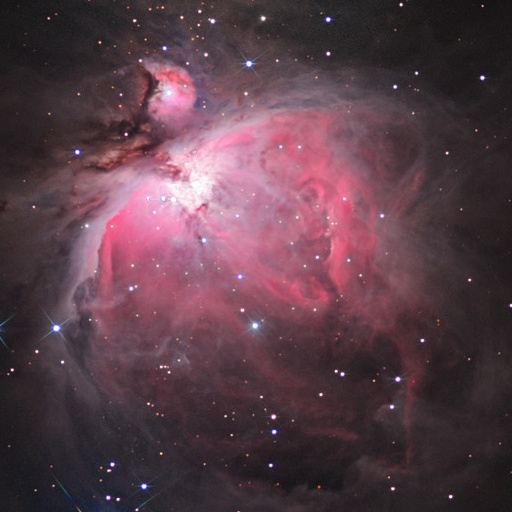
-
We know that the Orion nebula is a star-forming region
(a region containing stars that are much younger than the
14 billion year age of the Universe)
because:
A. It contains hot, luminous main sequence stars;
B. It contains glowing, ionized Hydrogen gas;
C. It is adjacent to a molecular cloud;
D. It is in a spiral arm;
E. It contains lots of stars close together.
Th 2005 Sep 29:
-
The interior of a white dwarf is:
A. Solid;
B. Liquid;
C. A hot plasma;
D. An electron degenerate plasma;
E. Made of neutrons.
-
Suppose you confine in an electron in a box
(which effectively is what a white dwarf does to the electrons in its interior).
If you remove as much energy as possible from the electron, then the electron will:
A. Come to a halt, with zero energy;
B. Keep moving, because the box keeps the wavelength to a certain minimum size,
forcing the electron to have some energy.
-
Astronomers ruled out intelligent life as an explanation for pulsars because
pulsars were found to emit over a wide range of radio frequencies.
The argument is that:
A. Intelligent life would probably emit optical signals, not radio signals;
B. Intelligent life would probably vary the frequency, so that it would encode an intelligible signal;
C. Intelligent life would probably emit signals at a single narrow frequency, to make the most efficient use of energy.
T 2005 Oct 11:
-
The Sun will end its life as:
A. A red giant;
B. A supergiant;
C. A white dwarf;
D. A neutron star;
E. A black hole.
-
A neutron star or black hole is created as the result of:
A. A planetary nebula;
B. A nova;
C. A thermonuclear supernova;
D. A core-collapse supernova;
E. A pulsar.
T 2005 Oct 18:
-
If you want to find a black hole on the sky,
the best kind of light to look in is:
A. Radio;
B. Infrared;
C. Visible;
D. Ultraviolet;
E. X-rays.
-
From Einstein's assertion that the speed of light is the same for all observers,
it follows that,
if light is emitted from a point where an observer is,
then the observer will always find self at the center of the expanding sphere of light,
irrespective of the observer's motion.
A. True;
B. False.

-
If the boxes are the same, how come they look different?
Th 2005 Oct 20:
-
According to Special Relativity,
if a car traveling at almost the speed of light
emits a beam of light in the direction it is moving,
then a person watching the car would see the light travel:
A. At almost twice the speed of light.
B. At exactly the speed of light.
C. At less than the speed of light.
-
If you traveled to the center of the Milky Way, about 30,000 lightyears distant,
at very close to the speed of light, the journey would take you, from your own point of view:
A. Much less than 30,000 years.
B. About 30,000 years.
C. Much more than 30,000 years.
-
At the moment you fall through the event horizon of a black hole:
A. Nothing special happens.
B. Time appears to freeze, from your point of view.
C. You get tidally torn apart.
D. You get incinerated by a burst of intense radiation.
E. Space and time as you know them come to an end.
T 2005 Oct 25:
-
The "No Hair" theorem states that an isolated black hole is characterized by:
A. Luminosity and Temperature;
B. Mass and Chemical Composition;
C. Mass, Electric Charge, and Spin;
D. Radius and Circumference;
E. The number and type of singularities.
-
The event horizon of a black hole is:
A. The atmosphere of a black hole;
B. The point at which an infalling person gets tidally torn apart;
C. The region within which there are no stable circular orbits;
D. The surface from within which light cannot escape;
E. A point of infinite density and curvature.
-
Light pointed directly upward at the horizon of a black hole hangs there for ever.
It follows that:
A. It takes an infinite time for light to get from the horizon to an outside observer;
B. An outside observer sees light frozen at the horizon;
C. An object at the horizon appears infinitely dim to an outside observer;
D. An object at the horizon appears infinitely redshifted to an outside observer;
E. An object at the horizon gets tidally torn apart there.
-
Suppose you watch a friend slowly go down to just above the horizon of a black hole,
then slowly come back up again.
When you meet again:
A. The friend will have aged less than you;
B. The friend will have aged the same as you;
C. The friend will have aged more than you;
D. You each think each other has aged less;
E. You each think each other has aged more.
Th 2005 Oct 27:
-
Near or inside a black hole, you perceive your own time
(the time going on inside your brain, or on your wristwatch)
to pass:
A. Much slower than normal;
B. Normally;
C. Faster than normal;
D. Either slower or faster, depending on how you are moving;
E. The question is meaningless, because time does not exist inside a black hole.
-
According to the river model of black holes, an outside observer cannot see light emitted from inside the event horizon of a black hole because:
A. Because the black hole curves space inside out;
B. Space inside the black hole is falling faster than light;
C. Because light circulates inside a black hole in circular orbits, never getting out;
D. Because the black hole destroys light, ripping it apart;
E. Inside a black hole there is no light, just blackness.
-
The main evidence that an x-ray binary system such as Cyg X-1 contains a black hole is:
A. The orbital dynamics imply more that 3 solar masses (the maximum possible mass of a neutron star) in a small space;
B. High resolution imaging by the Hubble Space Telescope reveals strong gravitational lensing;
C. Gas falling in appears to become dim and highly redshifted;
D. Rapidly variable (down to 1/100s of a second) energetic x-ray emission;
E. The presence of relativistic jets.
T 2005 Nov 1:
-
What does redshift mean?
A. A reddening of light by intervening clouds of dust and gas;
B. A shift of observed spectral lines to longer wavelengths;
C. An observed dimming of light;
D. An observed slowing down of the velocity of light;
E. A pink glow from Ha observed in star forming regions.
-
The main evidence that the centers of galaxies contain supermassive black holes is:
A. High resolution imaging by the Hubble Space Telescope reveals strong gravitational lensing;
B. A large redshift;
C. An often variable non-stellar spectrum extending from radio to gamma-rays;
D. The presence of (sometimes relativistic) jets;
E. A lot of mass (deduced from orbital motions of gas or stars) in a small space (deduced from high resolution images).
Th 2005 Nov 3:
-
What observation established that the "spiral nebulae" are "Island Universes" well outside the confines of the Milky Way?
A. Kant's 1755 proposal that the spiral nebulae are Island Universes rotating according to Newton's laws;
B. Henrietta Leavitt's 1907-1912 discovery of Cepheid variables in the Magellanic Clouds;
C. Vesto Slipher's 1912-1914 discovery that most spiral nebulae are redshifted (not blueshifted);
D. The 1920 "Island Universe" debate between Harlow Shapley and Heber Curtis;
E. Edwin Hubble's 1923-1924 discovery of Cepheid variables in the Andromeda galaxy.
-
The distance to the center of the Milky Way is about 104 pc,
whereas the size of the solar system is about 10-4 pc.
If the distance to the center of the Milky Way were scaled to the size of this room (10 meters),
then on the same scale the solar system would be about the size of:
A. An atom (10-10 m);
B. A molecule of DNA (10-7 m);
C. A pin head (10-3 m);
D. A foot (10-1 m);
E. You (1 meter).
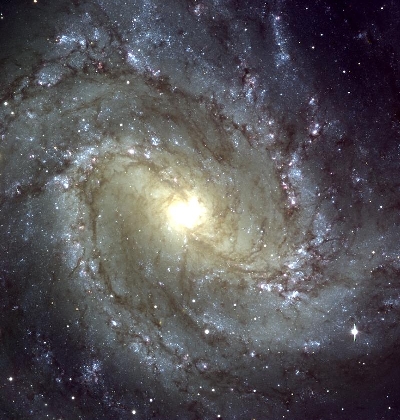
-
This is a Hubble Space Telescope image of our Galaxy.
A. True;
B. False;
C. Possibly.
T 2005 Nov 8:
-
What observation established that the "spiral nebulae" are "Island Universes" well outside the confines of the Milky Way?
A. Kant's 1755 proposal that the spiral nebulae are Island Universes rotating according to Newton's laws;
B. Henrietta Leavitt's 1907-1912 discovery of Cepheid variables in the Magellanic Clouds;
C. Vesto Slipher's 1912-1914 discovery that most spiral nebulae are redshifted (not blueshifted);
D. The 1920 "Island Universe" debate between Harlow Shapley and Heber Curtis;
E. Edwin Hubble's 1923-1924 discovery of Cepheid variables in the Andromeda galaxy.
-
Which of the following statements about globular clusters is false?
A. They are gravitationally bound clusters of stars containing typically 10,000 to a million stars;
B. There about 120 of them distributed in the halo of the Milky Way;
C. Our solar system is in a globular cluster;
D. They contain the oldest stars known, about 14 billion years old, as measured from their HR diagrams;
E. They are composed approximately 75% H, 25% He by mass, with very little heavier elements.
-
Where do the heavy elements of your body and the Earth (C, O, Fe, etc.) mainly come from?
A. The Big Bang;
B. Nuclear fusion in interstellar gas;
C. Nuclear fusion in main sequence stars like the Sun;
D. Nuclear fusion in supernova explosions;
E. Nuclear fusion in jets from black holes.
Note: nucleosynthesis = nuclear fusion.
-
How do astronomers know that Andromeda is moving towards the Milky Way at 300 km/s?
A. From the measured motion of Andromeda across the sky;
B. From the measured redshift or blueshift of Andromeda;
C. From Cepheid variables observed in Andromeda;
D. From the Hubble law;
E. From measurements of the mass of the Milky Way and Andromeda.
Th 2005 Nov 10:
-
What is probably the most important observed feature of galaxies?
A. A galaxy is a system containing billions of stars;
B. Galaxies come in a variety of shapes and sizes;
C. Galaxies are beautiful;
D. Galaxies are flying away from us with velocity proportional to distance, indicating that there was a Big Bang;
E. Galaxies collide, but when they do so, the stars do not collide, allowing life in the Universe to continue.
-
The Local Group of galaxies does not share in the general Hubble expansion of the Universe.
Why not?
A. Because the Local Group contains more matter than average, and its gravity has caused has caused it to start to collapse;
B. Because the Local Group contains the Milky Way, which is the largest structure in the Universe.
C. Because the Local Group is in a special place at the center of the Universe;
D. Because the Local Group is older than more distant galaxies;
E. Because Hubble's law does not apply to the Local Group.
-
At the center of the Local Supercluster of galaxies is:
A. The Milky Way;
B. The Local Group;
C. The galaxy M87;
D. The Virgo cluster;
E. The center of the Universe.
T 2005 Nov 15:
-
Which of the following statements about the Local Group is false?
A. The Local Group is the group of about 30 galaxies to which the Milky Way belongs;
B. The Local Group is the local region of the Universe which has turned around from the general expansion and is starting to collapse;
C. The two largest galaxies in the Local Group are the Andromeda galaxy (M31) and the Milky Way;
D. The Local Group is about 1 Mpc in radius;
E. Most of the galaxies in the Local Group are giant Elliptical galaxies.
-
Which of the following statements about the Local Supercluster of galaxies is false?
A. The Local Supercluster is a flattened structure about 100 Mpc across;
B. It contains thousands of bright galaxies;
C. The Local Group is on its outskirts;
D. At the center of the Local Supercluster is the Virgo cluster of galaxies;
E. The Local Supercluster has rotated about its axis many times during the age of the Universe.
-
A "Hubble diagram" is a graph of:
A. Brightness versus wavelength or frequency;
B. Luminosity versus temperature;
C. Mass versus radius;
D. Size versus time;
E. Velocity versus distance.
-
How can astronomers measure that a galaxy is rotating?
A. From the rotating motion of the galaxy on the sky;
B. From its redshift;
C. From the difference in the redshift of the galaxy from one side to the other;
D. From the swept back appearance of its spiral arms;
E. From Cepheid variables in the galaxy.
Th 2005 Nov 17:
-
In 1998 there was a revolution in cosmology,
leading to the "Standard Model of Cosmology"
(according to which the Universe contains 70% Dark Energy, 26% non-baryonic Dark Matter, 4% baryonic matter).
What observational discovery caused the revolution?
A. The redshifts of galaxies showed that the Universe is expanding;
B. The Hubble diagram of thermonuclear supernovae showed that the Universe is accelerating;
C. The rotation of spiral galaxies showed the existence of Dark Matter;
D. Gravitationally lensed arcs of distant background galaxies were found in rich galaxy clusters;
E. The discovery of the Cosmic Microwave Background.
-
Which of the following does not contain "Dark Matter":
A. The Solar System;
B. The Milky Way;
C. The Local Group;
D. The Local Supercluster;
E. The Universe.
T 2005 Nov 22:
-
Which one of the following was not discovered by
measuring redshifts (Doppler shifts) in spectra?
A. That Cepheid variables pulsate;
B. That the Universe is expanding;
C. That galaxies rotate;
D. That quasars are very far away;
E. That the solar system is moving through the Cosmic Microwave Background at 365 km/s.
-
Which of the following statements about the Cosmic Microwave Background (CMB) is false?
A. It was discovered by Arno Penzias and Robert Wilson working at Bell Labs in 1964;
B. It has a Planck spectrum to exquisite accuracy;
C. After correcting for our motion through it, the CMB is isotropic to a few × 10-5;
D. The temperature of the CMB today is comparable to the temperature at the center of the Sun, about 107 Kelvin;
E. It is one of the main evidences in favor of the hot Big Bang.
T 2005 Nov 29:
-
What is the principal observational evidence that the age of the Universe is about 14 billion years?
A. The oldest rocks (carbonaceous chondrites) in the solar system indicate an age of 14 billion years;
B. Radioactive decay of heavy elements created in the Big Bang indicates an age of 14 billion years;
C. The main sequence turn-off point in the HR diagrams of globular clusters indicates ages of about 14 billion years;
D. Light from the most distant galaxies and quasars appears to be about 14 billion years old;
E. The reciprocal of Hubble's constant gives an estimate of the age of the Universe.
-
Which of the following has a spectrum closest to
a Planck, or blackbody spectrum?
A. The Sun;
B. The Orion nebula, a star-forming region;
C. The Crab nebula, the remnant of the Supernova of 1054;
D. Cyg X-1, an x-ray binary thought to contain a black hole;
E. The Cosmic Microwave Background radiation.
-
If wavelengths of light stretch with the expansion of the Universe,
then the temperature of a blackbody spectrum of radiation
that expands with the Universe will:
A. Decrease;
B. Remain the same;
C. Increase.
Th 2005 Dec 1:
-
What observational evidence suggests that the Universe
shortly after the Big Bang was much simpler than it is today?
A. The expansion of the Universe;
B. The acceleration of the Universe, indicating that there is gravitationally repulsive Dark Energy;
C. The astonishing uniformity of the Cosmic Microwave Background;
D. The near blackbody (Planck) spectrum of the CMB;
E. The position (harmonic number) of the first peak in the power spectrum of fluctuations in the CMB.
-
What observational evidence suggests that the Universe is flat?
A. The expansion of the Universe;
B. The acceleration of the Universe, indicating that there is gravitationally repulsive Dark Energy;
C. The astonishing uniformity of the Cosmic Microwave Background;
D. The near blackbody (Planck) spectrum of the CMB;
E. The position (harmonic number) of the first peak in the power spectrum of fluctuations in the CMB.
-
What is the horizon problem?
A. Does our observable Universe have a horizon?
B. How far away is the horizon?
C. What lies beyond the horizon?
D. We cannot see the horizon, because the Cosmic Microwave Background gets in the way.
E. How can regions of the CMB more than 1 degree apart, which were causally disconnected at the time of Recombination, know to have the same temperature today?
T 2005 Dec 6:
-
Which of the following is not explained by the theory of Inflation?
A. Why the Universe is expanding;
B. Why the Universe is almost spatially flat (within 1%, according to observations of the CMB by the WMAP satellite, 2003);
C. The horizon problem (How can regions of the Cosmic Microwave Background more than 1 degree apart, which were causally disconnected at the time of Recombination, know to have the same temperature today?);
D. Where the matter and radiation in today's Universe came from;
E. What determines the laws of physics.
-
Which of the following is not one of the four forces
that appears to govern all the interactions between particles in nature today:
A. Gravity;
B. Electromagnetism;
C. The light force;
D. The weak force;
E. The strong (or nuclear, or color) force.
 Fall 2005 ASTR 1120-001 Homepage
Fall 2005 ASTR 1120-001 Homepage
Updated 2005 Dec 6
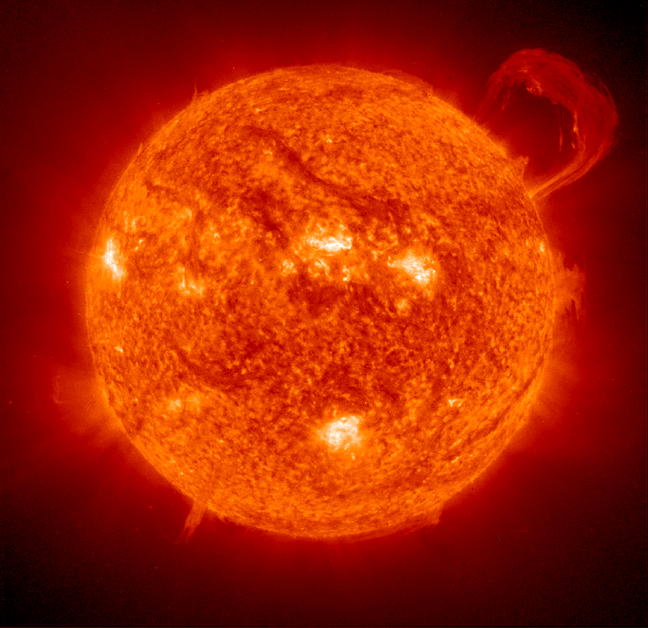
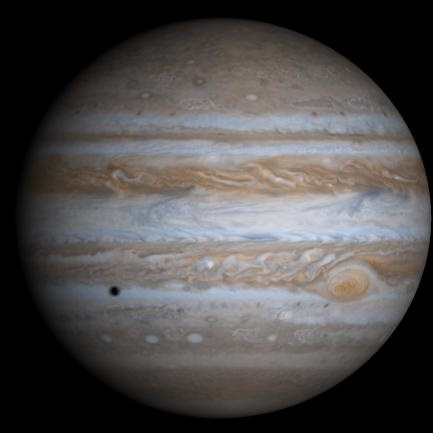
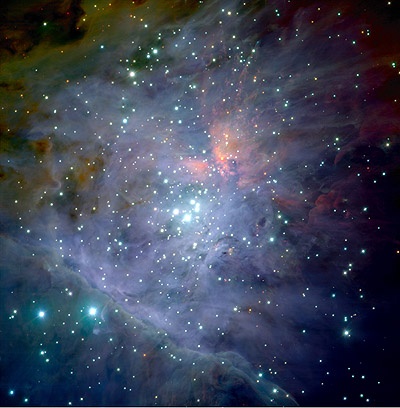

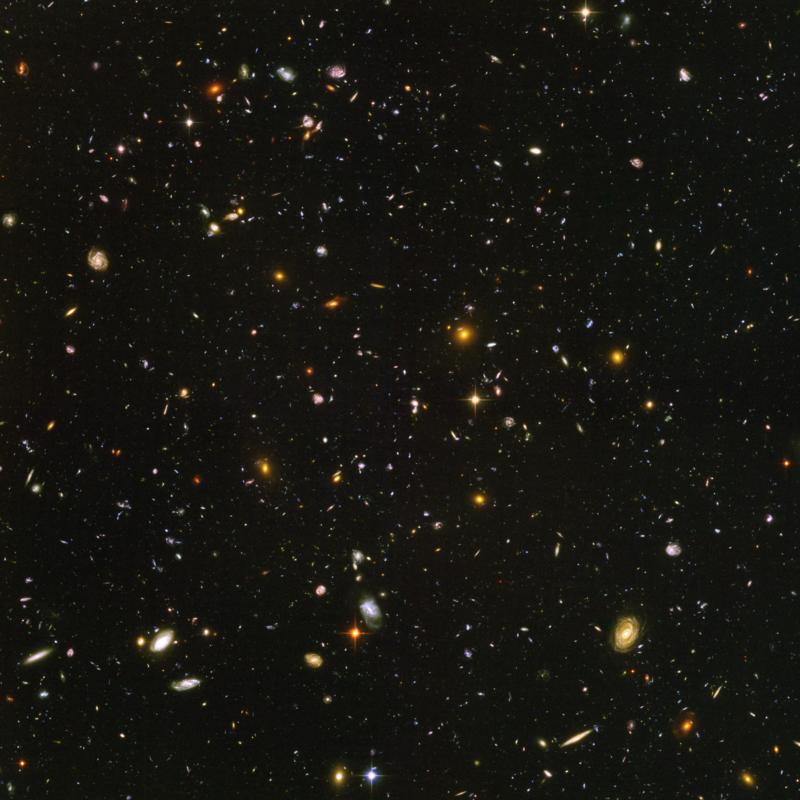
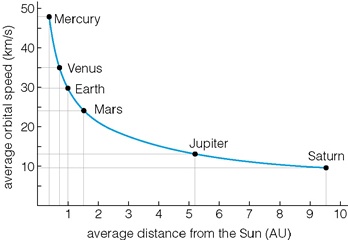



![]() Fall 2005 ASTR 1120-001 Homepage
Fall 2005 ASTR 1120-001 Homepage